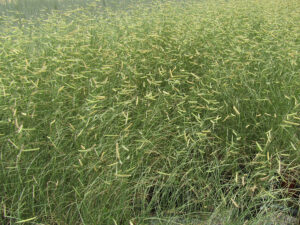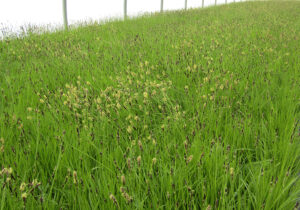This time of the year I have the opportunity to go through all of the many nursery magazines and other periodicals that we subscribe to, including Nursery Management published out of Valley View, Ohio, and specifically the December 2020 issue. We are reminded, in that publication, that Calamintha nepeta subsp. nepeta is the 2021 Perennial Plant of the Year. We happen to be ahead of that game as we have lots of cutting stock in the field and it makes up fast to the extent that it requires continuous cutting back. Whoever wrote the fluff piece to go with the nice photos of this fine plant deserves a raise—durable and pest-free, like a cloud of confetti, undemanding and dependable, perfect foil. If I could write like that, and still sleep at night, I could make some money. This is not an accent plant. It is the plant to put everywhere here and there so that it fills in solid and shades out weeds. It fills in a planting while staying fairly low providing background texture to the accent plants that rise above it and that have color. We used to offer other Calaminthas—‘Blue Cloud’, Montrose White’ and ‘White Cloud’—but they did not sell well enough to keep in the catalog.
Further along in this publication and under the heading “Educating the Public” was a well-illustrated article on some point of purchase marketing materials created by The University of Minnesota to help sell native grasses and carexes. This is a good idea and the reason given is that the native grasses flower and develop ornamental seed heads in the late summer-early fall time period. I like the color development during frost time, particularly of the Little Bluestems. All of this means that they are a tough sell in the usual spring garden center busy season, being little short tufts of grass and thus requiring lots of big color photos and such marketing aids.

I am continuously puzzled by Bouteloua gracilis ‘Blonde Ambition’ PP#22,048, and now even more so by the University of Minnesota promoting it. I hear rumors that it does not survive cold winters. And then I hear that it is wet soggy heavy ground that kills it in the winter. We are not able to test all of these hardiness issues here where we are in the Lake Michigan lake effect zone. Anyhow, this fine plant has the largest full-color photo of all grasses and sedges in the article. It is a selection that is not differentiated from other, un-named, native plants. Because of hardiness questions and a strong sense of ethics our sales organization here at the nursery has pulled ‘Blonde Ambition’ from the catalog.
I, on the other hand, can remember when I used to work hard, loading trucks late at night in the rain, getting up early to drive trucks on delivery, and being the fastest cutter and potter on the nursery just because. Therefore, I like the idea of having golden years. I have a little ‘Blonde Ambition’ propagation program on the side but not very well hidden and thus we will take orders for liners—2 ½” plastic pots—for delivery in June. We have done this before and gotten saleable reasonably good quality one gallon pots by August. We can do thousands of these liners and need to know sometime by late March. Because I am able to fall asleep easily these days, I can sleep at night, clear conscience or not, we will never know.

While on the subject of liners, we have finally gotten over that Carex rosea fiasco of three years ago and the more I think about it the more I want to publicize who we think was the nursery who sent us mis-labelled plants when we had ordered Carex pensylvanica liners. These days we have lots of Carex pensylvanica liners for sale in the spring. We have the propagation schedule down cold and, in fact, we are doing a little experimenting to see if we can speed up the propagation process a bit so that we can deliver more a little earlier in the spring. Next year we will be able to produce liners in the millions. These opportunities come but seldom and we, in the nursery production business, work hard for years just so we can take advantage of the opportunity when it arises.
Keep working out there in the landscaping business while knowing that we have been keeping busy producing plants all summer, fall, and now, winter.

